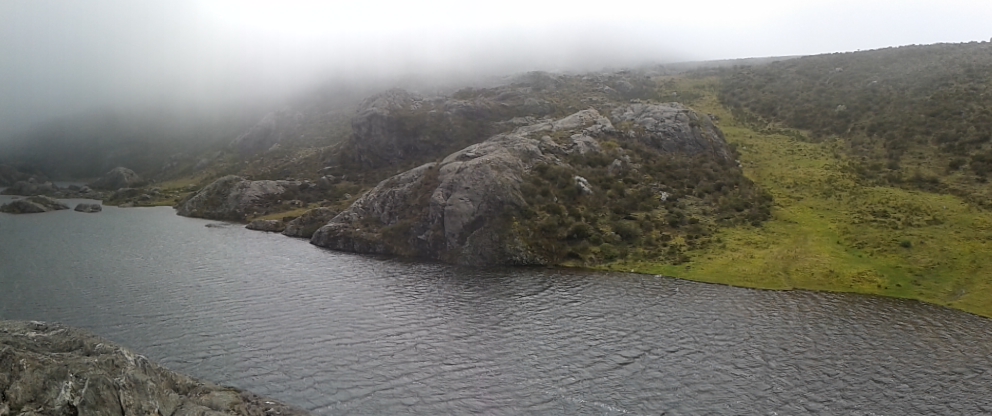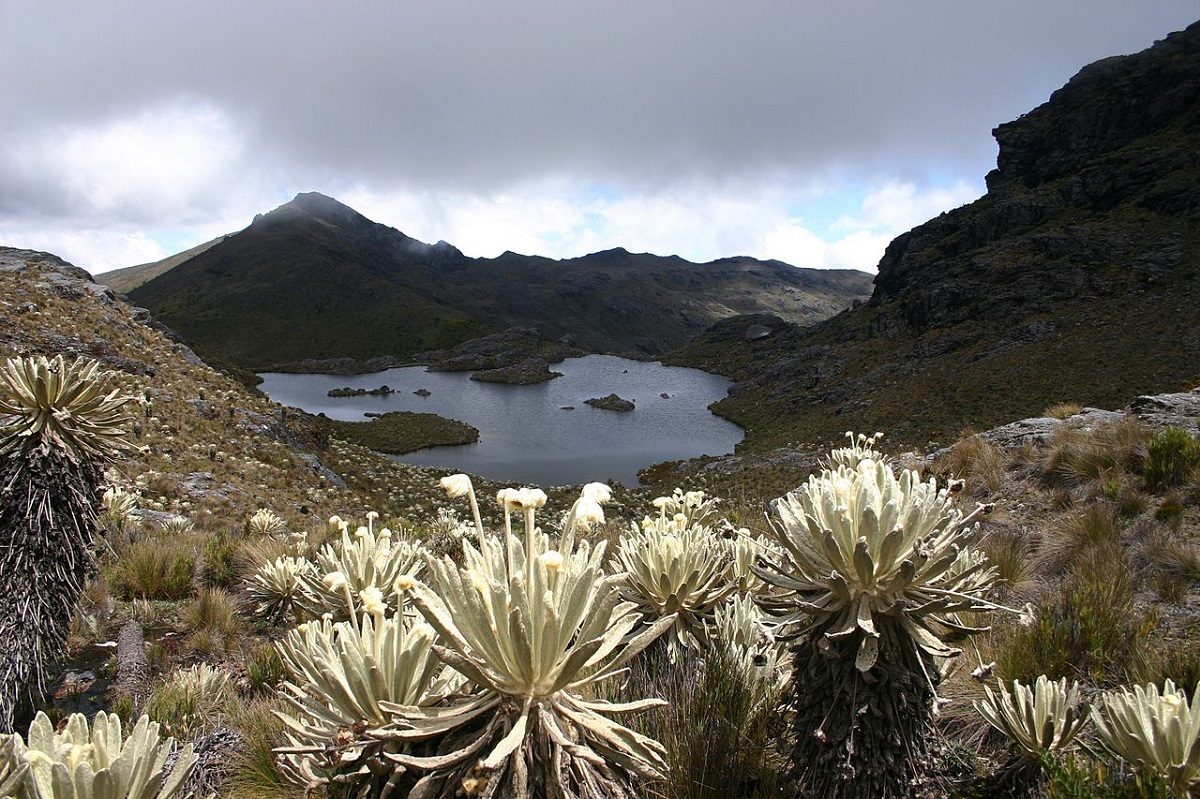- The IFC (International Finance Corporation) is the lending arm of the World Bank and had long backed the Eco Oro project in the Santurbán moorlands.
- Colombia has 34 moorlands, including Santurbán, that provide the vast majority of freshwater to the country’s residents.
- A new Colombian law that prohibits mining in moorlands, followed by an independent audit, led to the IFC’s divestment.
BOGOTÁ – A four year-old complaint against global mining company Eco Oro Minerals Corp. has resulted in an investigation and divestment from major investors in a regional project in Colombia. The International Finance Corporation (IFC), the private lending arm of the World Bank, was pressured to divest from a major mining project in Colombia owned by Eco Oro in December 2016. The Canadian junior mining company has struggled since the 1990s (then named Greystar Resources Limited) to develop its Angostura goldmine that is prospected in Colombia’s Santurbán Páramo – a high altitude wetland ecosystem.
Colombia has 34 páramos, or moorlands, and according to the Center for International Environmental Law, they are a source of freshwater for millions of people and home to precious metals often sought after by mining companies.
In the case of Santurbán, despite the IFC’s interest in the area’s generous gold deposits, the legal situation became prohibitively complicated over time. A new Colombian law that went on the books last year prohibits mining in moorlands, but companies continue to engage in nearby development. A complaint made in 2012 before the Compliance Advisor Ombudsman (CAO) by the Committee for the Defense of Water and the Santurbán Páramo led to a follow-up investigation by the World Bank´s independent accountability mechanism.
The final CAO report issued in August 2016 found that Eco Oro: “Was planning to develop a mine for which the potential to comply with IFC’s environmental and social standards was uncertain and potentially challenging.” The investigation results also determined that IFC’s supervision of the company’s security arrangements and its progress on biodiversity studies were inadequate for the company to be in compliance with IFC standards.

Carlos Lozano Acosta, an attorney with the Interamerican Association for Environmental Defence (AIDA), describes the decision as a major setback for regional mining.
“The decision is a serious political and financial blow, not only to the Angostura project, but also to all large-scale mining in the Páramo of Santurbán, a páramo that provides water for more than one million people,” Lozano said. According to him, the moorlands function as a “water fabric” that adds “a carbon sink that mitigates climate change and a strategic reserve of biodiversity.”
The Santurbán Páramo has a surface of more than 142,000 hectares (almost 351,000 acres). Colombian environmental activist groups such as AIDA see the IFC´s decision as an essential step in the protection of the Santurbán Páramo.
Functioning as a massive sponge, moorlands are vastly important for the generation and conservation of clean water. They account for about 85 percent of Colombia’s water supply, according to AIDA. Moorlands store collected water from rains and mists in glacial lagoons, peat bogs, marshes and humid soils, according to the Alexander von Humboldt Biological Resources Research Institute.
Mining issues
Conflicts around mining are mainly caused by contamination and extensive water use, Lozano said. Both have environmental and social impacts, especially in regions where the people and their livelihoods depend on aquatic resources.
Since 1995, then operating as Greystar, Eco Oro Minerals Corp. tried to develop the Santurbán project but never got beyond the exploration phase. Its Environmental Impact Assessment was denied by the Colombian government in 2009 and again in 2011.Eco Oro changed its approach from an open-pit mine to a proposed underground mine.
The IFC’s exit from the project and decision to sell its 10 percent stake in the company last December could have an impact: its equity investment was over $19 million. Eco Oro’s value has already decreased significantly over the past few years – its shares were valued at $8.90 ten years ago and they are currently valued at $0.72 Canadian (about $0.54) as of March 23, according to Bloomberg.
The IFC website states that confronting climate change is one of its priorities as their investments hope to achieve long-term business growth and positive development outcomes. However, the IFC still has numerous project investments in the mining industry, and fossil fuel money has been linked to forced displacement, according to an in-depth investigation by the International Consortium of Investigative Journalists.
“You can see that local communities who have had large-scale mining projects for thirty to forty years are poorer, the same or worse off than before,” said Manuel Becerra, who served as Colombia’s first environmental minister in 1994 and is currently a member of the steering committee of the CAO. He says the IFC should be careful about investing in controversial mining projects and suggests they should leave it to the private sector.
Other plans
Last year, Eco Oro attempted to pursue other money-making ventures in Colombia instead of physically pursuing the development of the Angostura mine in Santurbán. In December, the company announced it had filed a request for arbitration with the World Bank’s International Centre for Investment Disputes. The company argued that Colombia violated its obligations under the Canada-Colombia Free Trade Agreement when the state implemented measures to protect the Sánturban Páramo, limiting the company’s future prospects.
Claims based on clauses in free trade agreements could become a concern for Colombia as many mining titles have been granted in environmentally protected areas. U.S. company Tobie Mining & Energy Inc., Canadian company Cosigo Resources, and Cosigo´s Colombia branch Sucustral Colombia have said that they have suffered unfair delays in a project they want to develop in the Yaigoji Apaporis National Park and are seeking compensation.
The demand has to do with the Colombian government creating an area of natural protection instead of authorizing mining activities in the Amazon region. The three mining companies’ claim aims to reach $16.5 billion worth of gold believed to be in the area, according to the court claim, which was released by the government. That figure dwarfs the $10 billion given U.S. aid to Colombia since 2000.
An Eco Oro spokesperson declined to comment on the case to Mongabay as it is still ongoing.
Banner image: Santurban moorlands in Colombia. Photo by Grupo Areas Protegidas CORPONOR via Wikimedia Commons
Bram Ebus is a freelance journalist based in Colombia. You can find him on Twitter at @BramEbus.
FEEDBACK: Use this form to send a message to the author of this post. If you want to post a public comment, you can do that at the bottom of the page.
Citations:
Carbonell, M. H., (2012) The Angostura Mining Project in the Paramo of Santurban, Colombia. EJOLT Factsheet No. 002.
